Cregis Research: 2023 Bitcoin Ecosystem Research Report
Author: Cregis
I. Introduction
When exploring the Bitcoin ecosystem, we can categorize its projects into three main categories: mainnet scaling protocols, layer two solutions, and Turing-complete solutions. Mainnet scaling protocols are implemented directly on Bitcoin's main chain to expand its functionality. Layer two solutions are built on top of the Bitcoin main chain, providing additional features and improvements, such as increased transaction speed and reduced transaction costs. Finally, Turing-complete solutions introduce smart contract functionality to Bitcoin, enabling it to support more complex applications and explore new areas of Bitcoin use cases. These three categories together form a diverse and evolving Bitcoin ecosystem. This article will provide a comprehensive analysis centered around these three categories.
II. Bitcoin Main Chain Scaling Protocols
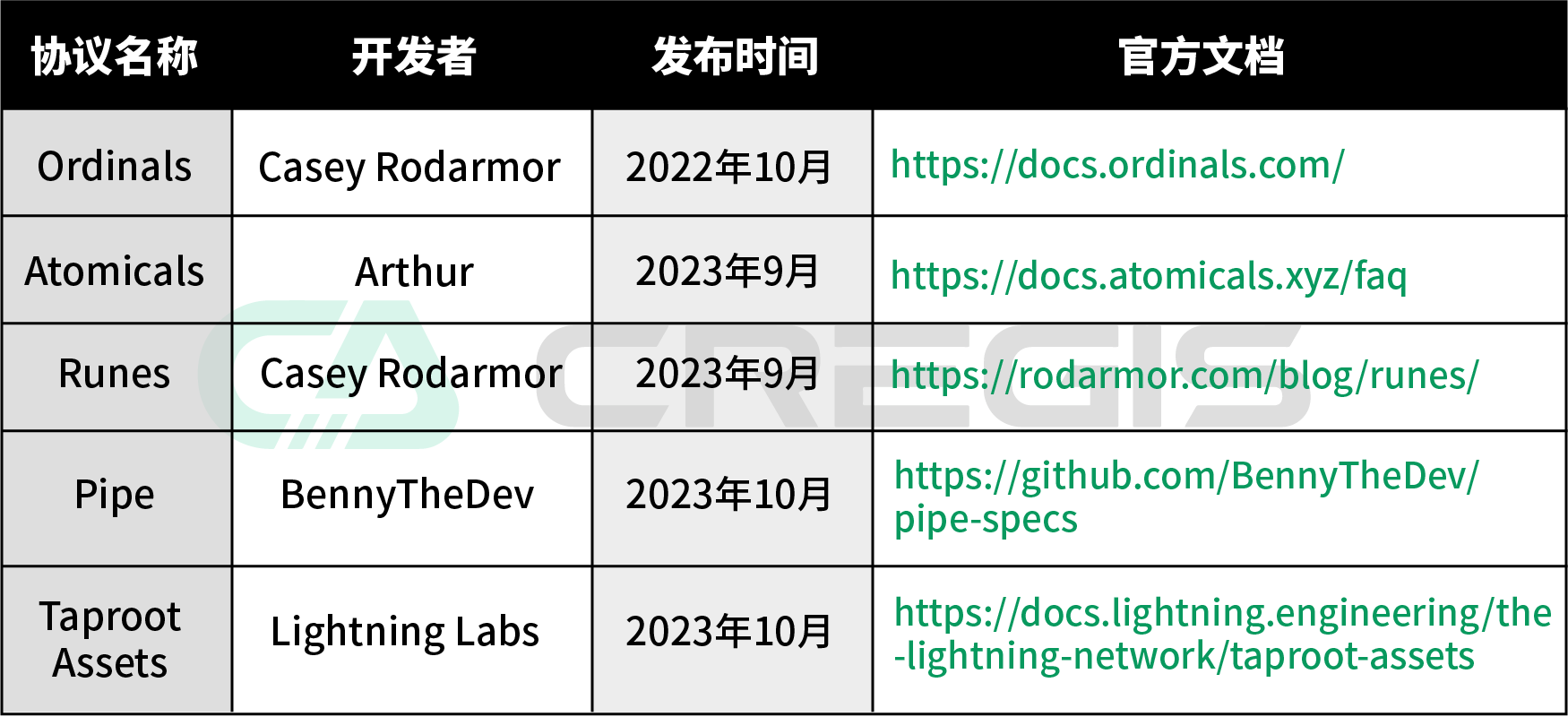
(1) Ordinals
(1) Introduction
The Ordinals protocol was released by developer Casey Rodarmor in June 2022 on his GitHub. The Ordinals protocol leverages the characteristics of the Bitcoin blockchain, allowing for unique marking and tracking of each Satoshi (the smallest unit of Bitcoin). The core idea of Ordinals is to create unique digital assets by attaching metadata such as text, images, and videos to individual Satoshis through a process called "inscription." Users can achieve on-chain data storage through the open-source project ord (https://github.com/ordinals/ord).
(2) Development History
January 2020: Bitcoin core developers Pieter Wuille released BIP 341 and BIP 342 Bitcoin Improvement Proposals, bringing possibilities to today's Bitcoin ecosystem.
June 2022: Casey Rodarmor technically extended and expanded Tapscript in BIP 342, proposing the concepts of Bitcoin "Ordinals" and "inscription," enabling the assignment of unique numbers to each Satoshi and adding annotations for extended functionality.
March 2023: Domodata conducted BRC-20 experiments, using the Ordinals protocol and inscriptions feature to store JSON data on the Bitcoin chain, proving off-chain token balance states, effectively enabling the issuance of tokens in the Bitcoin ecosystem.
December 9, 2023: The National Vulnerability Database officially numbered the Ordinals inscription feature as CVE-2023-50428.
(3) Core Technology
The Ordinals protocol is essentially based on Bitcoin's Taproot upgrade and Segregated Witness (SegWit) technology, allowing arbitrary data to be stored in the witness through opcodes, thus achieving on-chain storage functionality. The National Vulnerability Database has officially numbered the "inscriptions" feature of Ordinals as CVE-2023-50428.
The main purpose of the Taproot upgrade is to enhance Bitcoin's privacy and scalability, rather than to write data to the blockchain. After the Taproot upgrade, arbitrary data can be embedded in the script as signature data using opcodes like "OPFALSE" and "OPIF" when creating witness scripts. During transactions, the signature data is separated from the transaction subject, and any data brought in by opcodes is stored in the witness data.
Ordinals bypasses the data carrier size limit through the above method, allowing up to 4MB of data to be stored in the witness data section of any Bitcoin block, effectively enabling the minting of NFTs.
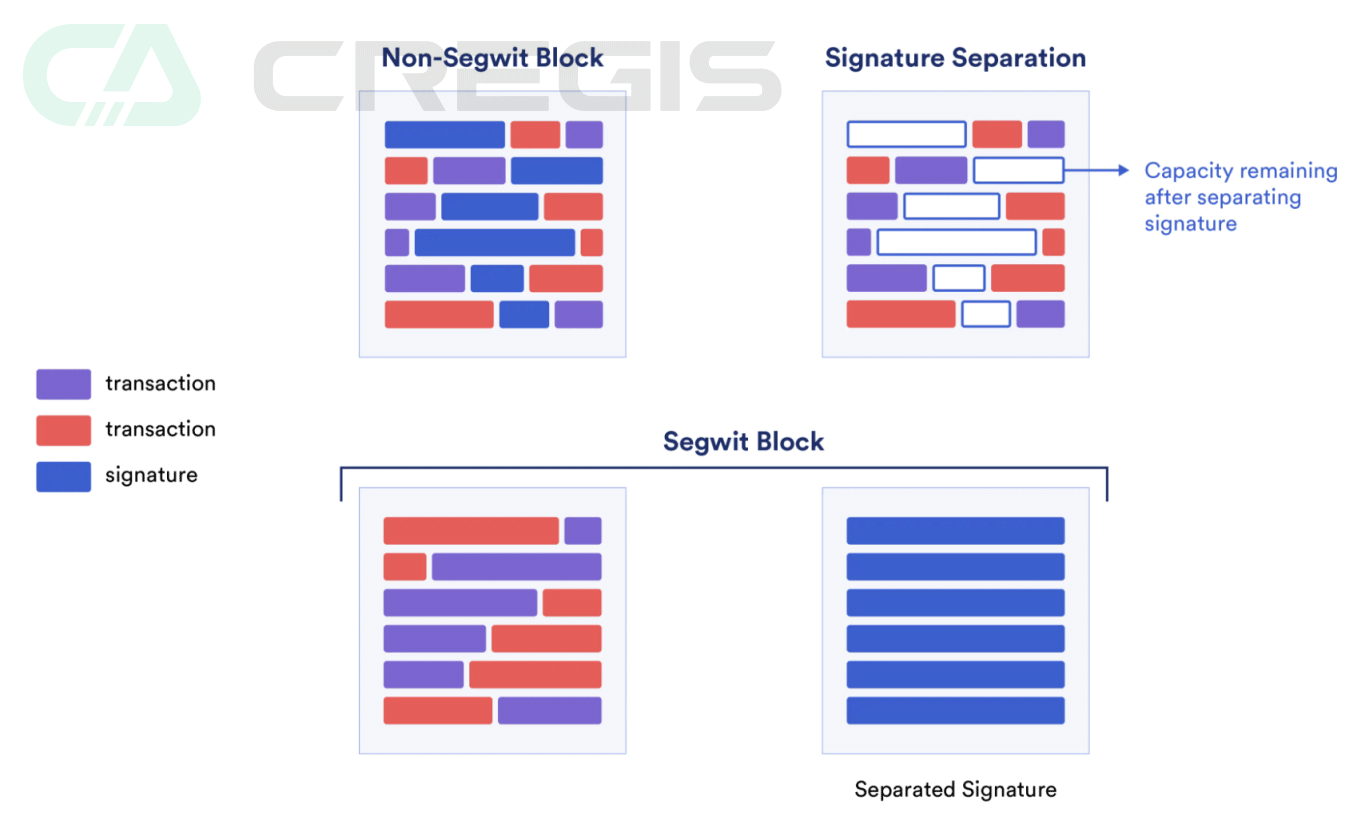
(4) Application Cases
In March 2023, Domodata developed the BRC-20 inscription standard based on the Ordinals protocol, using Satoshis to store and manage various information about tokens, such as token name, symbol, total supply, etc. This information is encoded in JSON format and written into Satoshis, forming individual inscriptions. By aggregating the transaction activities of all inscriptions, one can find the balance status of BRC-20 digital assets, thus enabling the deployment, minting, and transfer of digital assets.
The top three digital assets minted based on the Ordinals protocol and BRC-20 standard are "SATS," "ORDI," and "MUBI," with their market performance shown in the following image:

(5) Advantages and Disadvantages
The Ordinals protocol has brought both positive impacts and raised some concerns for the Bitcoin ecosystem. The positive impacts are mainly reflected in market enthusiasm and miner income.
- Advantages
Attracting Users: The combination of the Ordinals protocol and BRC-20 standard allows users to mint digital assets on the Bitcoin network. For example, the price of "ordi" skyrocketed, attracting a large number of users and developers to participate in the Bitcoin ecosystem. Additionally, in November 2023, the number of transactions on the Bitcoin chain increased by 62% month-over-month (MoM), primarily due to Ordinals and BRC-20.
Miner Income: Bitcoin miner income comes from block rewards and transaction fees. Due to the market enthusiasm surrounding Ordinals and BRC-20, the average transaction fee for Bitcoin has seen a significant increase since early May this year, with the fee in March being only 0.19 BTC, which rose to 4.85 BTC in May.
- Disadvantages
On-chain Data: The data stored through the Ordinals protocol is additional non-financial data that will forever remain on the blockchain. Those who wish to run full nodes will need to spend more hard disk space. Over time, the requirements for running a Bitcoin full node will continue to rise, leading to a more centralized verification of the chain.
Transaction Fees: The emergence of Ordinals may lead to increased costs for node operators running full nodes, raising transaction fees, increasing the burden on the chain, and potentially negatively impacting users who wish to conduct on-chain transactions.
(2) Atomicals
(1) Introduction
The Atomicals protocol was developed by Arthur and released in September 2023. The mission of Atomicals is to "permanently return control of personal digital sovereignty and solidify Bitcoin's status as a proof-of-work beacon."
The Atomicals protocol is based on the UTXO of BTC for minting and dissemination, with 1 token = 1 sat. The Atomicals protocol integrates the ARC-20 minting standard internally, allowing minting functionality through its open-source tool atomicals-js (https://github.com/atomicals/atomicals-js) without the need for third-party tools or minting standards (such as the BRC-20 standard).
At the same time, Atomicals is a proof-of-work asset minting protocol that requires mining through computer CPUs to obtain digital assets. Compared to the asset minting method using gas in Ordinals + BRC-20, it has a higher technical threshold and does not impose an additional burden on the Bitcoin network.
(2) Development History
June 2022 - March 2023: The Ordinals protocol + BRC-20 standard brought new vitality to the Bitcoin ecosystem.
September 2023: Arthur, who had previously developed domain DID-related projects on Ordinals, discovered the limitations of Ordinals and systematically redeveloped the Atomicals protocol.
September 21, 2023: The first token based on the Atomicals protocol, "ATOM," was released and mined out within 5 hours.
December 13, 2024: Atomicals protocol author "Arthur" was interviewed, sharing recent developments of the Atomicals protocol, stating that "the Atomicals Protocol was initially built for the Realm system (used to associate network addresses and resource information), aiming to fundamentally change online identity and naming issues."
December 14, 2024: The mainstream ARC-20 tokens in the Atomicals protocol ecosystem experienced a surge, with "ATOM" price surpassing $13, setting a historical high.
(3) Core Technology
The Atomicals protocol is designed based on the Taproot upgrade, achieving digital asset minting by embedding JSON data in UTXOs. Each UTXO in Bitcoin can embed information representing specific assets, such as the number and type of tokens.
- 1 Satoshi = 1 Token
Unlike the Ordinals protocol originally designed for NFTs, Atomicals rethinks how to mint digital assets more reasonably on Bitcoin from the ground up. It uses the smallest unit of Bitcoin, Satoshi, as the basic atom, with each Satoshi's UTXO representing the token itself, forming a binding relationship of "1 Satoshi = 1 Token," meaning the value of each token will never be lower than the value of one Satoshi.
- Transaction Validation
In Atomicals, transaction validation only requires querying the corresponding Satoshi's UTXO on the BTC chain. Additionally, ARC20 Tokens maintain the same atomicity as BTC itself, with transfer calculations entirely relying on the BTC base network processing, thereby reducing dependence on third-party sorters and enhancing the system's decentralization.
- Exchange between BTC and ARC20
ARC-20 uses the Satoshi unit in the Bitcoin network to represent each token, and they can be split and combined like regular Bitcoin. ARC-20 tokens can be minted by anyone and transferred to any type of Bitcoin address, and can be used with wallets that support UTXO. Since BTC is essentially also composed of UTXOs, the exchange between BTC and ARC-20 can be achieved simply by swapping the inputs and outputs of UTXOs.
- Proof of Work
Bitwork mining is a concept in the Atomicals protocol that essentially introduces a proof-of-work mechanism, allowing tokens to be mined through CPU/GPU mining.
(4) Application Cases
The Atomicals protocol was launched in September 2023, and ARC-20 and REALM are still in the early stages of development, awaiting improvements from the community and developers. The top three digital assets minted based on the Atomicals protocol are "ATOM," "REALM," and "ELECTON," with their market performance shown in the following image:

(5) Differences between Atomicals and Ordinals
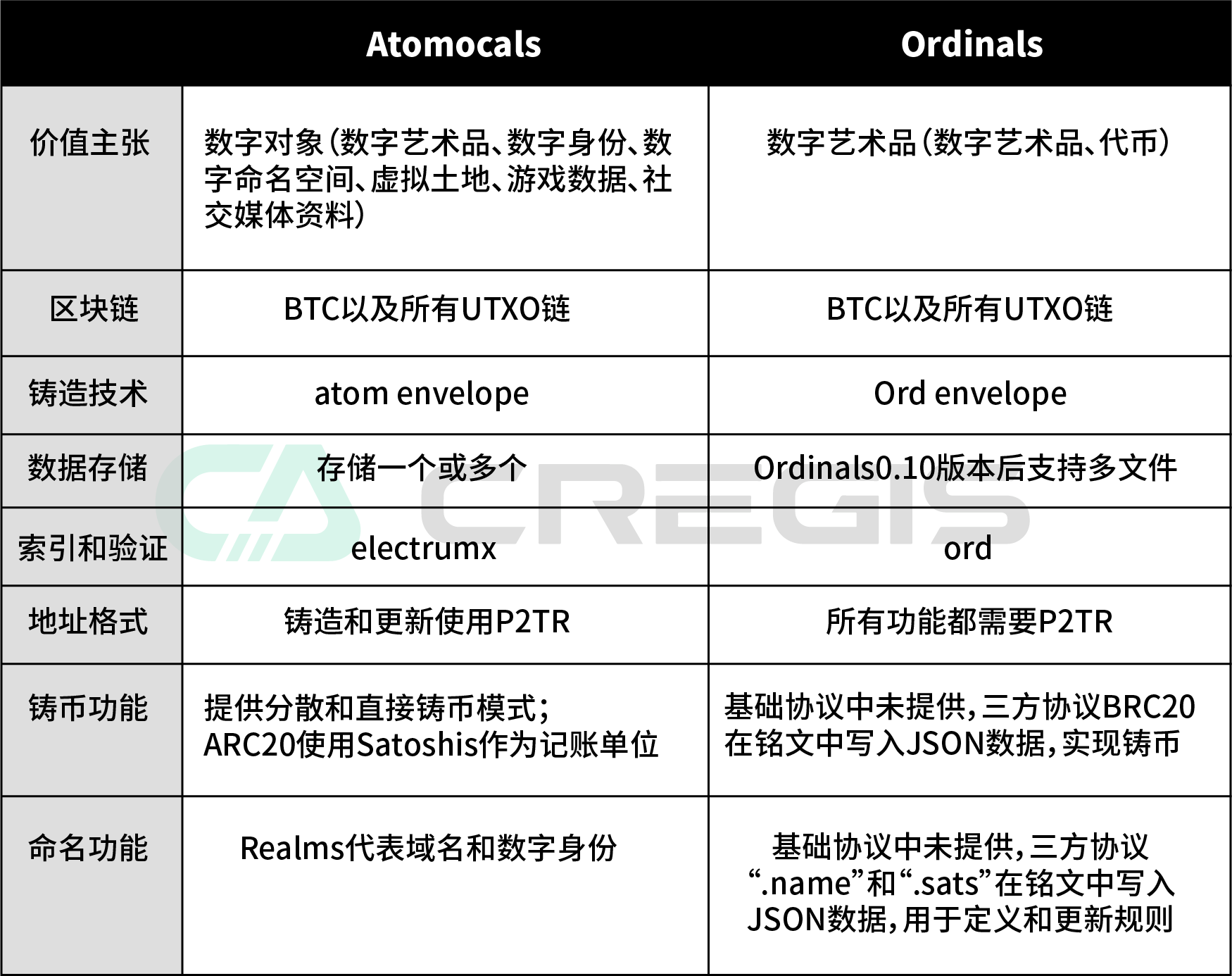
(3) Runes and Pipe
(1) Introduction
The Runes protocol and Pipe protocol are both minting protocols for the Bitcoin network, with the former being a technical concept and the latter being a technical implementation of the former. The Runes protocol was proposed by Ordinals developer Casey Rodarmor as a technical idea, published on his personal blog. The Pipe protocol, on the other hand, is a usable protocol written by BennyTheDev based on Casey Rodarmor's technical idea.
The design of the Pipe protocol is very similar to ARC20, directly writing minting data (deployment, minting, transfer) into UTXOs, and then handing the transfers over to the Bitcoin mainnet for processing.
(2) Development History
September 26, 2023: Ordinals developer Casey Rodarmor published a blog post about the Runes protocol on X.
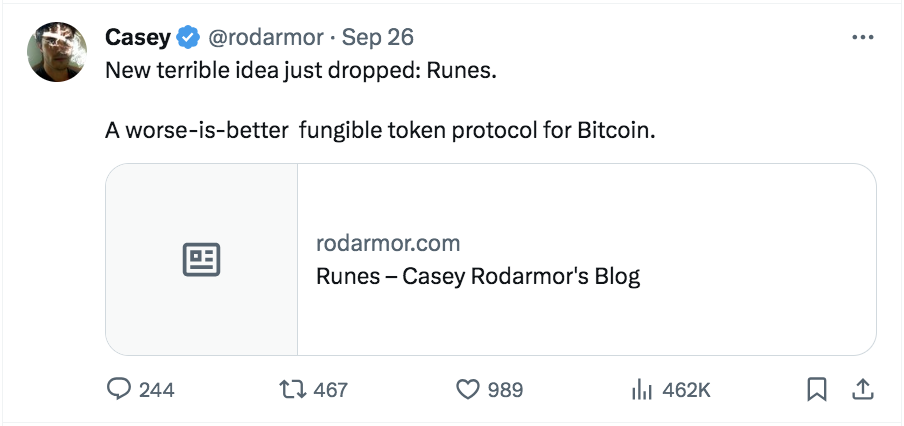
September 27, 2023: BennyTheDev developed the Pipe protocol based on Casey Rodarmor's Runes and Ordinals as well as BRC-20.
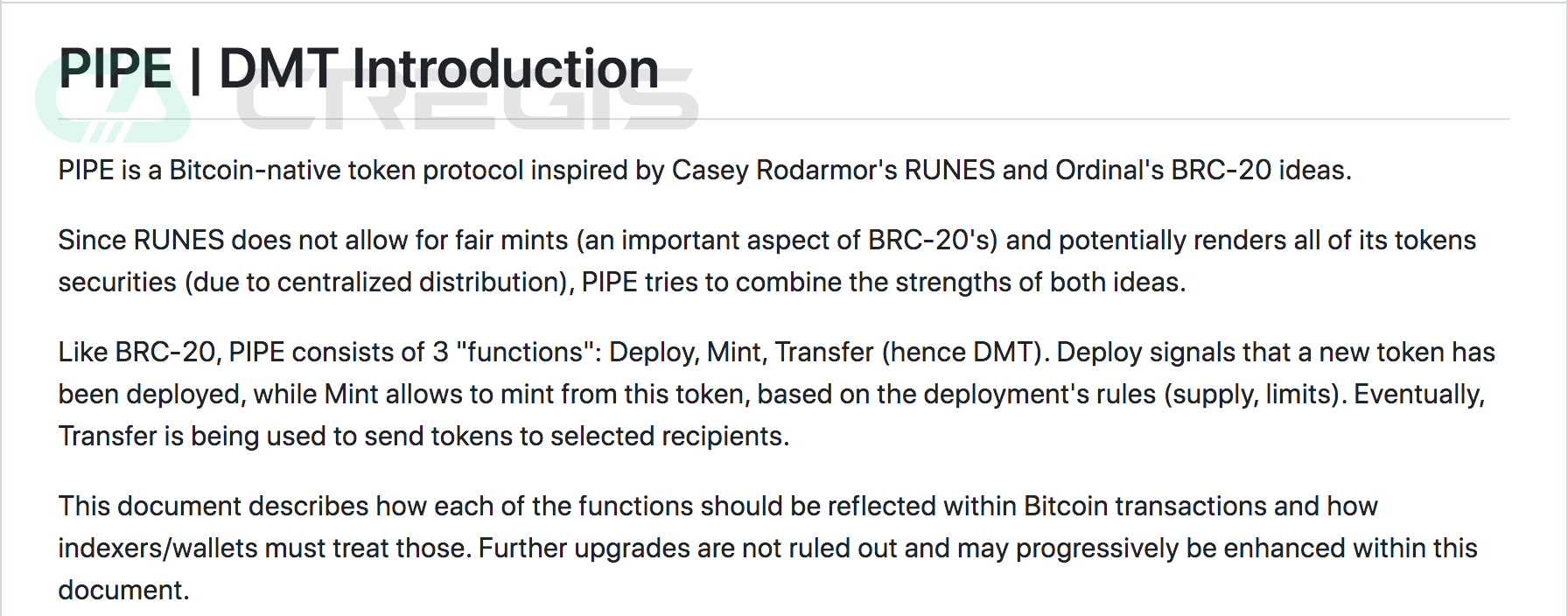
November 2, 2023: Casey Rodarmor stated in a space that he would pause the development of the Runes protocol to continue focusing on optimizing the Ordinals protocol.
(3) Application Cases
The author of the Pipe protocol, BennyTheDev, is also the founder of Trac System. Trac Systems lists the Pipe protocol as an important component of its ecosystem.
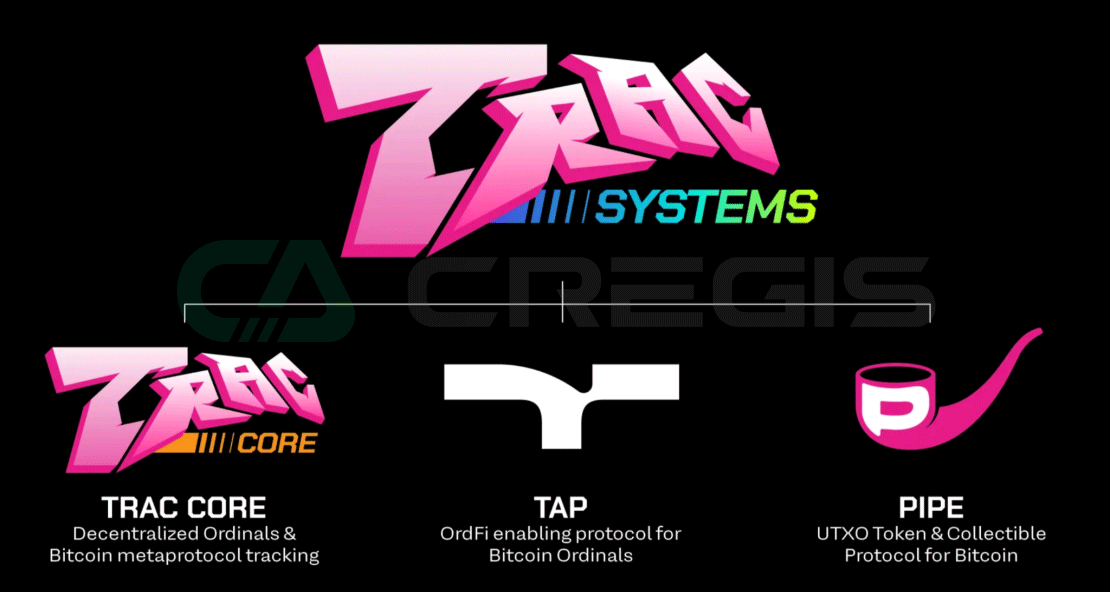
(4) Taproot Assets
(1) Introduction
The Taproot Assets protocol (formerly Taro) was released by Lightning Labs in October this year, supporting the issuance of stablecoins and other assets on the Bitcoin and Lightning networks.
The Taproot Assets protocol treats the Bitcoin mainnet as a token registry, writing token information only in the UTXOs of the Bitcoin mainnet, without storing functions such as token transfers or minting. All asset information issued by the Taproot Assets protocol is preserved by the "Taproot Assets universe," which retains information about issued assets, quantities, and rules, as well as evidence of recent transfers.
(2) Development History
In October 2023, Lightning Labs, a developer of second-layer infrastructure for Bitcoin, released the Taproot Assets protocol on the mainnet, supporting the issuance of stablecoins and other assets on the Bitcoin and Lightning networks.
November 15, 2022: Lightning Labs released Taro v0.1.0.
May 16, 2023: Lightning Labs released Taproot Assets v0.2.0.
October 18, 2023: Lightning Labs announced on official X that Taproot Assets v0.3.0 is the first mainnet version, allowing for the issuance of digital assets on-chain in an expanded manner.

(3) Core Technology
Taproot Assets is a Bitcoin on-chain protocol designed based on the Taproot upgrade. Taproot Assets uses "Merkle Sum, Sparse Merkle Tree (MS-SMT)" and "Taptweak" to commit to defining the creation and ownership of assets. Taproot Assets relies on Taproot to implement a new tree structure, allowing developers to embed arbitrary asset metadata in existing outputs.
Creating assets under the Taproot Assets framework requires executing a separate on-chain root transaction (Taproot transaction), in which there are no limits on the number of mintable assets or the number of accounts that can hold these assets. To achieve asset transfer, the Merkle tree needs to be reorganized, and a new on-chain transaction must be published. This single on-chain transaction can reflect an unlimited number of internal Taproot Assets transactions.
By adopting this method, funds are allocated to account holders, and during Taproot Assets transactions, all movements and allocations of funds are recorded in this single on-chain transaction. In this way, Taproot Assets allows for complex asset management and transactions on the Bitcoin and Lightning networks.

(4) Application Cases
Currently, the Taproot Assets ecosystem is still in its early stages of development, with few mature projects. The most notable project is Nostr Assets, which has created two tokens, Trick and Treat, and airdropped them to ORDI holders.
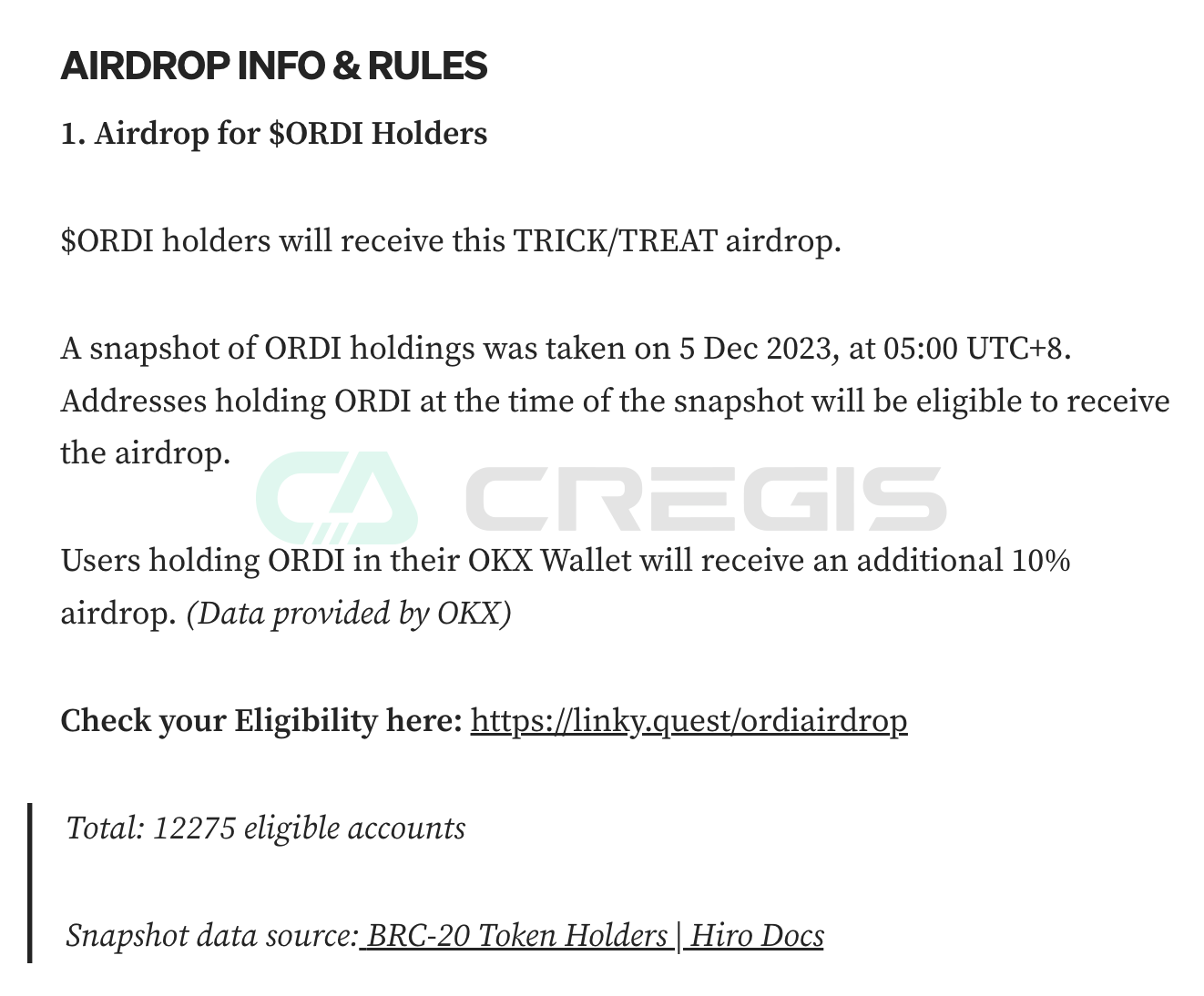
(5) Advantages and Disadvantages
- Advantages
Low Transaction Costs: Taproot Assets is integrated with the Lightning Network and does not rely entirely on the Bitcoin mainnet for operation. Therefore, these assets must be stored in the Lightning Network to be traded, resulting in lower transaction costs compared to the mainnet.
Less Resource Consumption on the Mainnet: Taproot Assets only stores token information in the UTXOs of the Bitcoin mainnet and does not store information on token transfers and other functions.
- Disadvantages
Centralization: The tokens of Taproot Assets rely on third-party storage indexers, and without these storage indexers, the tokens will be permanently lost. Therefore, users need to independently run a Bitcoin full node and a Taproot Assets client; otherwise, they will completely rely on centralized servers to trade Taproot Assets tokens.
Distribution Method: Users cannot directly mint tokens on the Bitcoin mainnet by themselves; instead, they need the project party (a single address) to mint all tokens at once, which are then transferred to the Lightning Network for distribution. The project party can also reserve tokens for itself.
III. Bitcoin Layer Two Solutions
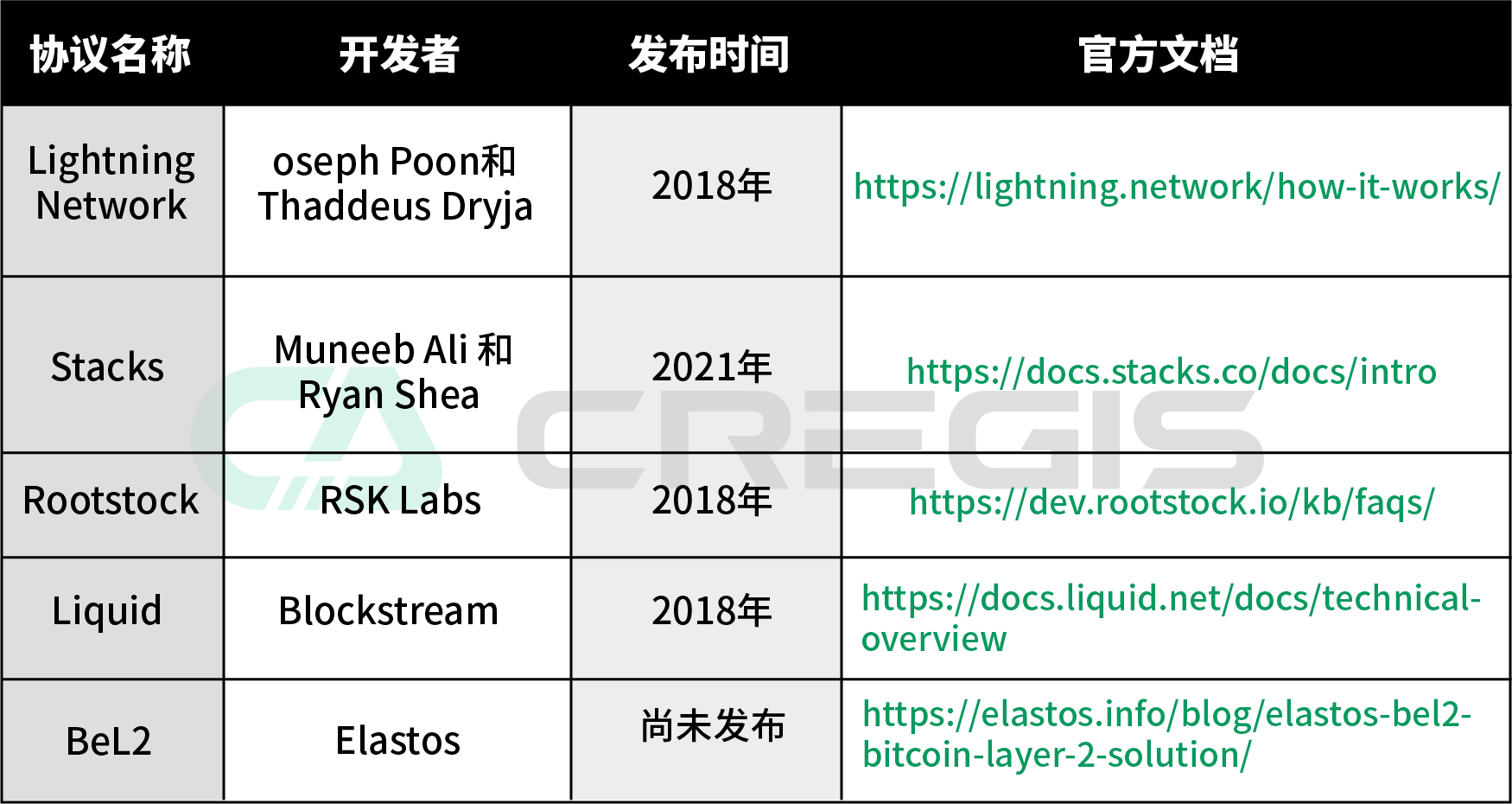
(1) Lightning Network
(1) Introduction
The Lightning Network is a layer two network solution for Bitcoin based on off-chain state channels. It aims to address the scalability issues of the Bitcoin network, allowing for faster, more efficient, and cheaper transactions.
(2) History
February 2015: Joseph Poon and Thaddeus Dryja released a draft of the Lightning Network white paper.
May 2017: Christian Decker from Blockstream conducted the first complete and secure Lightning payment on a non-test network, as well as the first Lightning payment on Litecoin, sending micro-payments that would typically be impossible or uneconomical on the blockchain, settling completely in a fraction of a second.
January 2019: Twitter user hodlonaut conducted a promotional test similar to a game on the Lightning Network, sending 100,000 satoshis (0.001 Bitcoin) to trusted recipients, each adding 10,000 satoshis (then worth $0.34) to send to the next trusted recipient. The "Lightning Torch" payments benefited notable individuals, including Twitter CEO Jack Dorsey, Litecoin creator Charlie Lee, Lightning Labs CEO Elizabeth Stark, and Binance CEO "CZ" Zhao Changpeng. Before reaching the previously hard-coded limit of 4,390,000 satoshis, the Lightning Torch was passed 292 times. The final payment of the Lightning Torch was donated on April 13, 2019, as a donation of 4,290,000 satoshis (then worth $217.78) to a non-profit organization promoting Bitcoin in Venezuela.
June 2021: The Legislative Assembly of El Salvador voted to pass legislation making Bitcoin legal tender in El Salvador. This decision was based on the success of the Bitcoin Beach ecosystem in El Zonte, which used wallets based on the Lightning Network. The government launched a wallet using the Lightning Network protocol while allowing citizens to freely use other Bitcoin Lightning wallets.
(3) Core Technology
Andreas Antonopoulos refers to the Lightning Network as a second-layer routing network. Payment channels allow participants to transfer funds to each other without publicly disclosing all their transactions on the blockchain. This is accomplished by penalizing non-cooperative participants. When opening a channel, participants must submit an amount (in a funding transaction on the blockchain).
If we assume there is a vast network of channels on the Bitcoin blockchain, and all Bitcoin users participate in this graph by opening at least one channel on the Bitcoin blockchain, it becomes possible to create nearly unlimited transactions within this network.
(4) Application Cases
Cryptocurrency exchanges like Bitfinex and Kraken use it for deposits and withdrawals. Laszlo Hanyecz became famous in the cryptocurrency community for paying 10,000 Bitcoins for two pizzas in 2010; in 2018, he used the Lightning Network to buy two pizzas again, paying 0.00649 Bitcoins.
(5) Advantages and Disadvantages
- Advantages
Atomic Swap: Atomic swaps were first introduced by Tier Nolan in 2013 on the BitcoinTalk forum. Nolan outlined the basic principles of cross-chain cryptocurrency exchanges using simple cryptocurrency transactions across different types of blockchains.
Granularity: Some implementations of the Lightning Network allow payments smaller than the minimum unit of Bitcoin, the satoshi. Routing fees paid to intermediate nodes in the Lightning Network are typically priced in milliseconds or msat.
Privacy: The details of individual Lightning Network payments are not publicly recorded on the blockchain. Lightning Network payments can be routed through many consecutive channels, with each node operator able to see the payment through their channel, but if they are not adjacent, they cannot see the source or destination of those funds.
Speed: The settlement time for Lightning Network transactions is less than a minute and can be measured in milliseconds. In contrast, the average confirmation time for the Bitcoin blockchain occurs every ten minutes.
Transaction Throughput: There is no fundamental limit to the amount of payments that can occur under the protocol per second. The transaction volume is only limited by the capacity and speed of each node.
- Disadvantages
Channel Closure: The Lightning Network consists of bidirectional payment channels between two nodes, which together create smart contracts. If either party abandons the channel, it will close and settle on the blockchain.
Fraud Monitoring: Due to the nature of the dispute mechanism in the Lightning Network, all users are required to constantly observe the blockchain for fraudulent behavior, leading to the development of the concept of "Watchtower," which requires outsourcing trust to watchtower nodes to monitor fraudulent activities.
(2) Stacks
(1) Introduction
Stacks is a sidechain-based layer two network solution for Bitcoin, with its initial version released in early 2021. Its goal is to extend Bitcoin's functionality while maintaining its core characteristics, such as decentralization and security. Stacks essentially builds a new chain outside the Bitcoin chain, with an independent governance structure and transaction model. Compared to Ethereum's layer two solution Rollup, Stacks uses the PoX (Proof of Transfer) consensus algorithm, and transaction validators need to stake STX tokens (to mine BTC), while miners need to stake BTC on the Bitcoin main chain (to mine STX).
(2) History
2013: Muneeb Ali and Ryan Shea founded Stacks while studying in the Computer Science Department at Princeton University.
2017: Stacks released the public alpha version of the Blockstack browser, gaining significant public and investor support, and launched a token offering worth $47.4 million by the end of the year.
2018: Over 360 applications were developed using Stacks. With market enthusiasm, the token offering raised $23 million. This was also the first token offering in U.S. history to receive SEC certification.
2019: Stacks 2.0 was in the testing and development phase.
January 2020: Stacks 2.0 was released, marking a new turning point for Stacks, introducing smart contracts, POX (Proof of Transfer), and Stacking.
Early 2021: The mainnet of Stacks 2.0 went live.
2022: Stacks continued to focus on improving development, expanding community size, and introducing new ways to interact with the Bitcoin network.
Q4 2023 - Q1 2024: Launch of the Nakamoto upgrade.
(3) Core Technology
The technical architecture of Stacks includes a core layer and subnet, with the core layer interacting with the Bitcoin layer based on the PoX (Proof of Transfer) mechanism. The PoX mechanism is similar to PoS staking, and the interaction process is as follows:

STX Miners: In the Stacks network, STX miners participate in leader election by sending transactions on the Bitcoin blockchain. This process involves a verifiable random function (VRF) that randomly selects a leader for each round. In this process, miners increase their chances of becoming the next block leader by providing higher Bitcoin bids. Once selected as a leader, the miner creates and records new blocks on the Stacks blockchain.
Stacking of STX Holders: STX holders can participate in consensus and earn Bitcoin rewards by engaging in a process called "Stacking." In this process, users lock their STX tokens for a period (approximately two weeks) while running or supporting a full node and sending useful information on the network through STX transactions. STX holders who actively participate in Stacking will receive Bitcoin rewards for their contributions to the network during the corresponding period.
(3) Rootstock
(1) Introduction
Rootstock (RSK) is a sidechain-based layer two network solution for Bitcoin developed by RSK Labs, launched on the Bitcoin mainnet in 2018, introducing smart contract functionality. As an EVM-compatible sidechain on the Bitcoin network, RSK allows developers to build dApps and smart contracts using Ethereum's language and integrate them into the Bitcoin ecosystem.
(2) History
2015: The RSK technical white paper was published.
2016: RSK Labs (later renamed IOV Labs) was established.
January 2018: The RSK mainnet went live, enabling features such as Bitcoin two-way anchoring, merged mining, transaction transfers, and smart contract deployment.
November 2018: RIF Labs issued RIF OS through the RSK smart contract platform and merged with RSK. This project expanded the RSK protocol, adding various P2P features.
May 2019: A core component of RIF, the Lumino network, was released, and RIF Labs subsequently changed its name to IOV Labs.
February 2023: IOV Labs launched the RIF Flyover protocol to facilitate BTC transfers between the Bitcoin mainnet and the RSK sidechain.
May 2023: IOV Labs launched a $2.5 million grant program to support the adoption of Rootstock.
(3) Core Technology
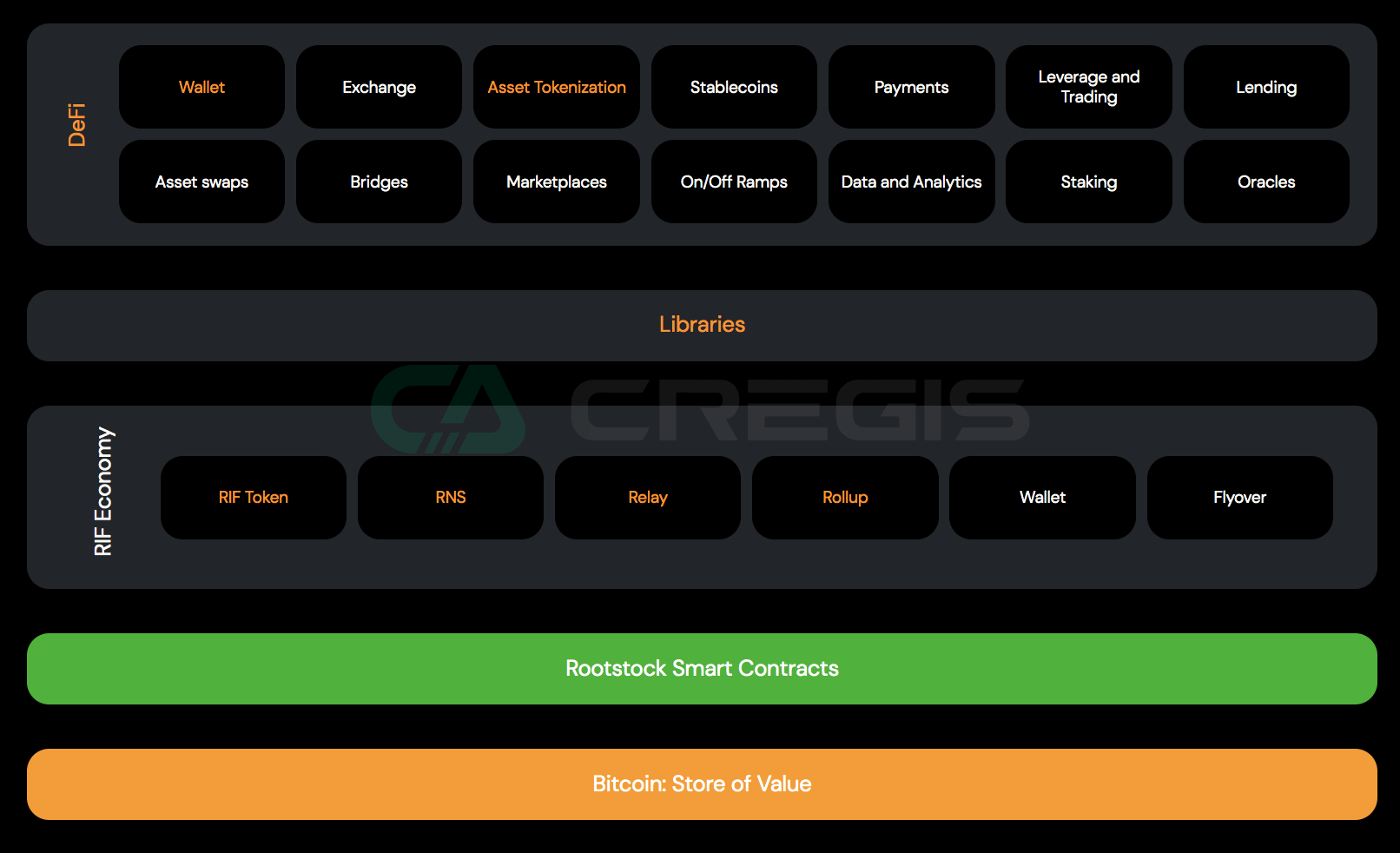
The project architecture of Rootstock (RSK) can be briefly summarized into three core components:
Merged Mining: RSK allows Bitcoin miners to mine both Bitcoin and RSK blocks simultaneously, increasing the earning potential for developers. Since RSK and Bitcoin use the same proof-of-work (PoW) consensus mechanism, miners can mine both blockchains simultaneously. This merged mining approach not only enhances miners' profitability but also maintains the security of the Bitcoin blockchain.
Powpeg: This is a two-way bridge used to transfer Bitcoin between the Bitcoin and RSK blockchains. Implemented through RSK's asset smartBTC (RBTC), this bridge allows users to seamlessly convert funds between the two blockchains without additional fees.
RSK Virtual Machine (RVM): RVM is based on the Ethereum Virtual Machine, allowing Ethereum smart contracts to be executed on RSK. This provides developers with a platform to build Ethereum-compatible applications using Solidity.
RIF OS (Root Infrastructure Framework Open Standard) is built on Rootstock, providing developers with a range of infrastructure and services to support DeFi, storage, domain services, and payment solutions. RIF OS aims to lower the barrier for developers to adopt blockchain technology by providing open and decentralized tools, promoting fair market development of decentralized infrastructure services.
(4) Liquid
(1) Introduction
Liquid, launched by Blockstream in 2018, is a sidechain-based layer two network solution for Bitcoin. One important component of Liquid is its solution for Bitcoin DeFi, allowing users to utilize decentralized financial services supported by the Bitcoin blockchain by sending Bitcoin to Liquid.
Liquid ties itself to Bitcoin through a pegging system, operating independently of the Bitcoin network. Liquid has L-BTC or Liquid Bitcoin as its native token, created by locking Bitcoin into a multi-signature wallet managed by different member alliances. The assets on the sidechain are pegged to the value of their native assets at a 1:1 ratio, allowing anyone to use their tokens and coins on another blockchain.
(2) History
October 2018: The Liquid network was jointly launched by Blockstream and the world's largest cryptocurrency exchanges and trading desks (Liquid was introduced at this time).
July 2019: The Lightning Network supported the Liquid network.
January 2020: The Liquid network supported BTCPay Server.
July 2020: The number of Liquid federation members reached 53.
August 2021: Raised $210 million in Series B funding, reaching a valuation of $3.2 billion.
January 2022: The number of Liquid Federation members increased to 63.
October 2023: Blockstream launched Greenlight to achieve scalable, non-custodial Lightning integration.
(3) Core Technology
Liquid is essentially a sidechain of Bitcoin, allowing Bitcoin to be transferred 1:1 from the main chain to the sidechain, and also allowing tokens on the sidechain to be transferred back to the main chain at a 1:1 ratio. Through the sidechain, we can achieve functionalities that the main chain cannot provide without altering the original blockchain, such as fast transfers, private transfers, and smart contracts.
The Liquid network operates through a two-way peg technology, generating an equal amount of L-BTC on the sidechain for BTC on the main chain. Transfers within the Liquid network are conducted using L-BTC, which is pegged to BTC at a 1:1 ratio. Users obtain L-BTC by locking in Bitcoin (peg-in), generating an equal amount of L-BTC after 102 Bitcoin block confirmations. Using L-BTC, users can enjoy fast transfers on the Liquid network. Transferring L-BTC back to BTC (peg-out) requires only two Liquid network block confirmations but must be operated by a member institution of the Liquid network. Liquid network members are responsible for generating blocks, similar to miners in the Bitcoin network, generating one block per minute, ensuring fast and reliable transfer speeds. Liquid network members include Bitfinex, OKCoin, Huobi, etc., with a complete list of members available on Liquid.net.
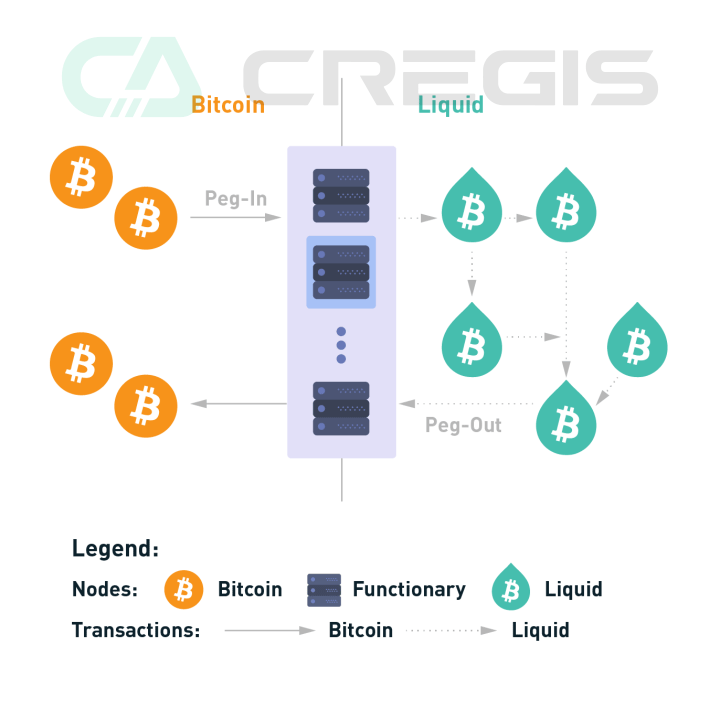
(5) BeL2
(1) Introduction
Elastos announced on November 25 that it plans to launch the Bitcoin layer two network BeL2. The announcement states that BeL2 will enhance Bitcoin's functionality, such as transaction speed, smart contracts, and privacy protection, without changing Bitcoin's core principles.
(2) Development Plan
Elastos' BeL2 will release a white paper in December this year. The BeL2 white paper will detail the operational mechanism and a one-year product plan, completing concept technology validation in the first three months, achieving decentralization of the relayer in the following three months, and integrating it into the "Hero" product in the final six months.
(3) Architecture
Zero-Knowledge Proof: The BeL2 network will adopt zero-knowledge proof technology. When Bitcoin users conduct transactions, the system generates special proofs to demonstrate that transactions have indeed occurred without disclosing specific details, such as the identities of the parties involved or the transaction amounts. This ensures the verifiability of transactions and the privacy of users.
Relayer and Staking Mechanism: The BeL2 network will use relayers to transmit and verify transactions on the Bitcoin network. A staking mechanism will incentivize and regulate relayer operators to ensure network security.
Smart Contract Functionality: BeL2 will introduce smart contract functionality, expanding Bitcoin's application examples. BeL2 is protected by the DAO council members of Elastos SmartWeb, with its global community voting annually using ELA (its mining reserve currency merged with Bitcoin).
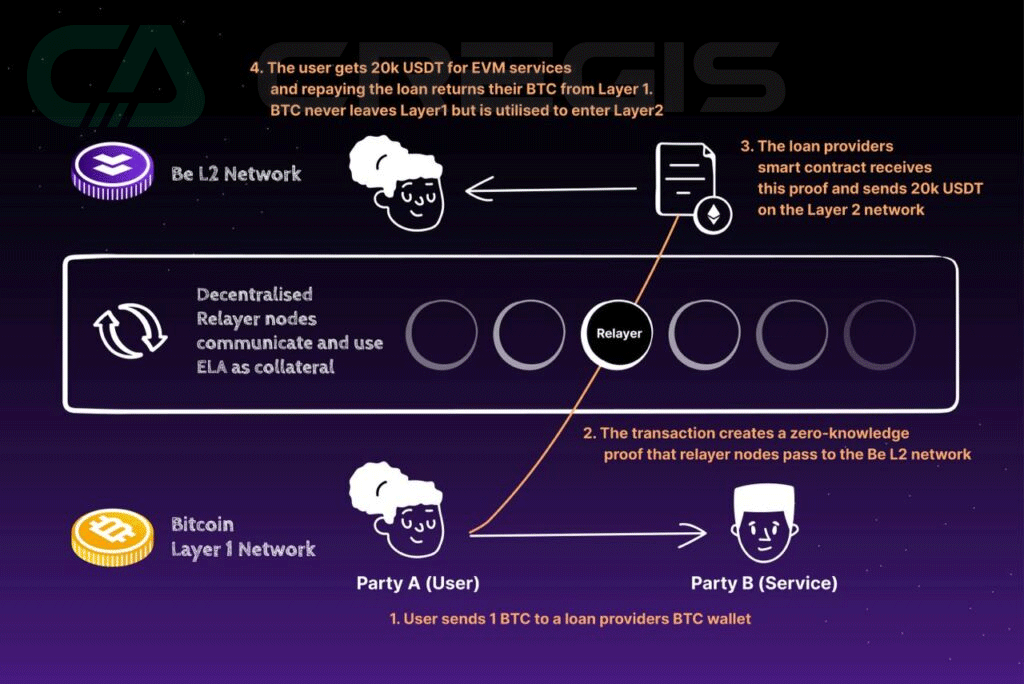
IV. Bitcoin Turing-Complete Solutions

(1) BitVM
(1) Introduction
Robin Linus, the head of the ZeroSync project, published a paper on BitVM on October 9 (BitVM: Compute Anything on Bitcoin). In simple terms, BitVM is a virtual machine for the Bitcoin network that achieves Turing completeness through off-chain execution and on-chain verification without changing the consensus rules of the Bitcoin network.
(2) Differences between BitVM and EVM
BitVM differs significantly from Ethereum smart contracts. While Ethereum smart contracts can support multi-party transactions, BitVM's design only supports two-party transaction exchanges. Most transaction processing in BitVM occurs off-chain, minimizing the impact on the underlying Bitcoin blockchain; in contrast, EVM is an on-chain engine where all operations occur in Ethereum's native environment. BitVM is an optional additional engine for the Bitcoin blockchain, and its operations do not require BitVM. In comparison, EVM is an integral part of the Ethereum blockchain; without EVM, there is no Ethereum.

(3) Core Technology
The functionality of BitVM is achieved through the Bitcoin Taproot upgrade. BitVM primarily relies on the Taproot address matrix (taptree), similar to program instructions in binary circuits. In this framework, the UTXO spending condition instructions in each Script are viewed as the smallest unit of a program, generating 0 or 1 through specific codes in the Taproot address, forming a taptree. The execution result of the entire taptree is a binary circuit text effect, equivalent to an executable binary program. The complexity of the program depends on the number of combined Taproot addresses; the more addresses, the richer the pre-set instructions in the Script, and the more complex the programs that the taptree can execute.
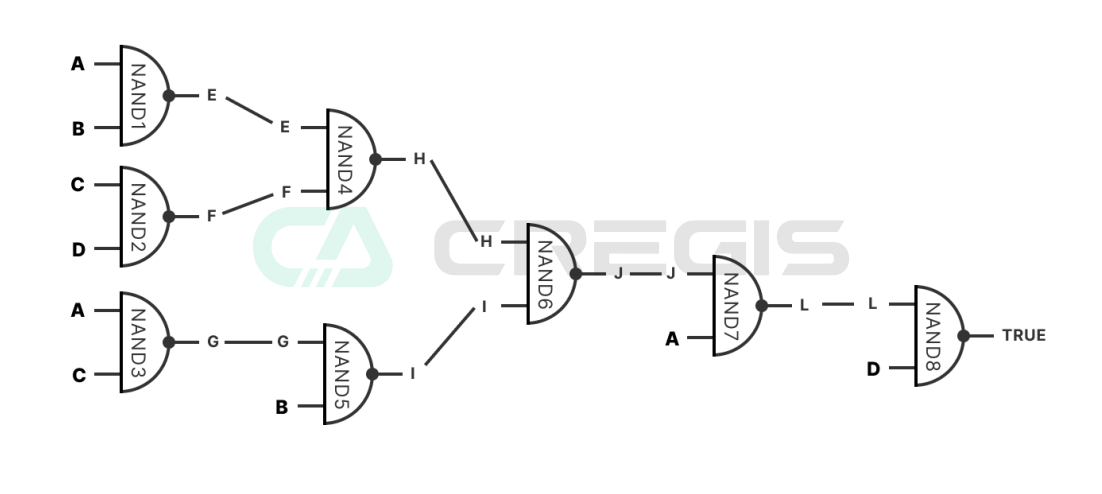
Most processing in BitVM occurs off-chain, with off-chain processed transactions bundled into batches and published to the underlying Bitcoin blockchain, utilizing a validity confirmation model similar to optimistic rollups. At the same time, BitVM uses a model that combines fraud proofs with challenge-response protocols to handle and verify transactions between two parties (prover and verifier). The prover initiates a computational task and sends it through a channel established between themselves and the verifier, who then confirms the validity of the computation. Once verified, the transaction is added to the entire batch for publication to the underlying Bitcoin blockchain.
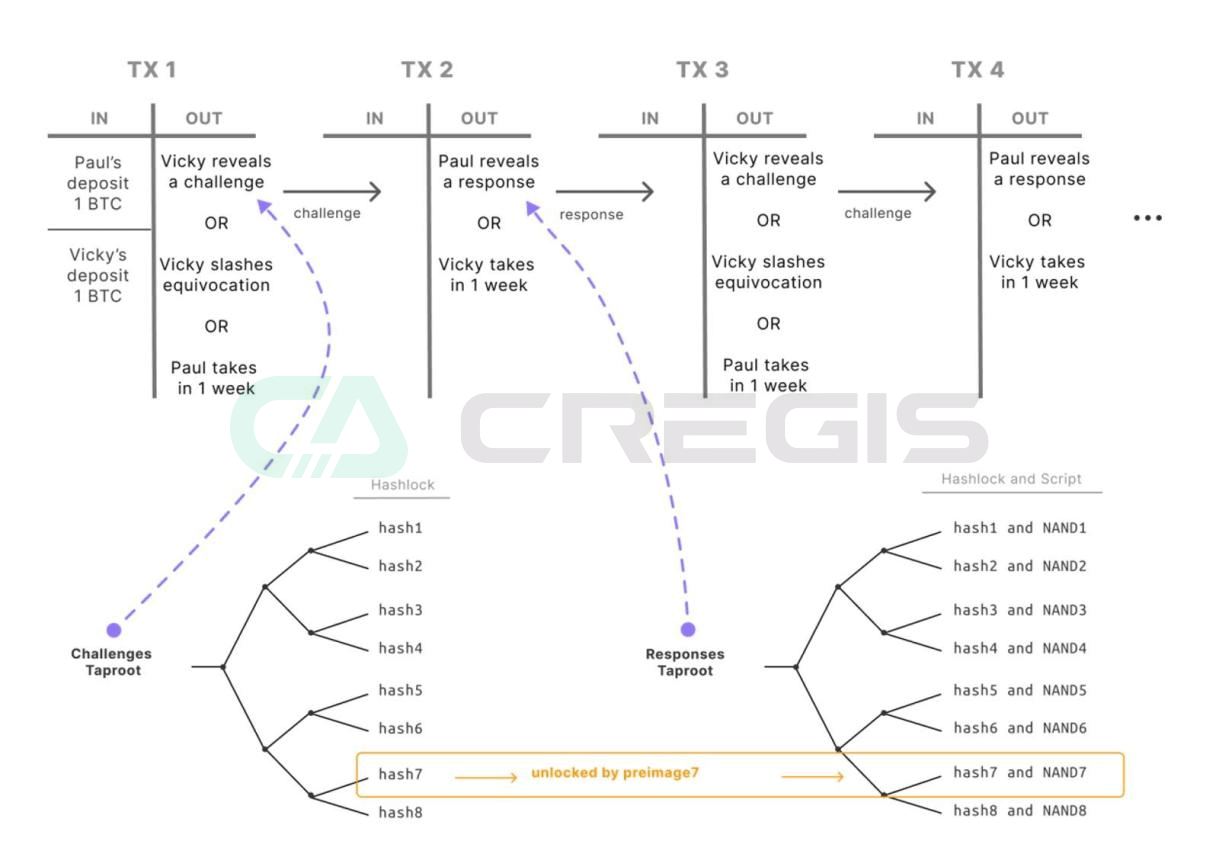
(2) RGB
(1) Introduction
RGB, maintained and updated by the LNP/BP Association, is a smart contract system that supports the Bitcoin network and the Lightning Network. The RGB protocol proposes a more scalable, privacy-focused, and future-oriented solution, with its foundation based on Peter Todd's concepts of client-side validation and single-use seals proposed in 2017.
(2) History
2016: Giacomo Zucco first proposed the RGB concept based on Peter Todd's ideas.
2017: BHB Network released the original version, supported by the Poseidon Group.
2019: Maxim Orlovsky and Giacomo Zucco founded the LNP/BP Standards Association, promoting the development of the RGB protocol towards practical applications, with Dr. Maxim Orlovsky redesigning the protocol.
2021: The LNP/BP Standards Association showcased the Turing-complete virtual machine (AluVM) of the RGB protocol and began running it on the Lightning Network.
2022: A new smart contract language, Contractum, was launched.
2023: RGB v0.10 was released.
(3) Core Technology
The core idea of RGB is to use the Bitcoin blockchain only when necessary, leveraging proof of work and the network's decentralization to achieve protection against double spending and censorship resistance. The verification work for all token transfers is removed from the global consensus layer and placed off-chain, verified solely by the client of the party receiving the payment.
So how does it work? In RGB, tokens essentially belong to a Bitcoin UTXO (whether an existing UTXO or a temporarily created one), and to transfer tokens, you need to spend this UTXO. When spending this UTXO, the Bitcoin transaction must include a commitment to a message, the content of which is the RGB payment information, defining the inputs, which UTXO these tokens will be sent to, the asset ID, the amount, the spending transaction, and any other necessary additional data.
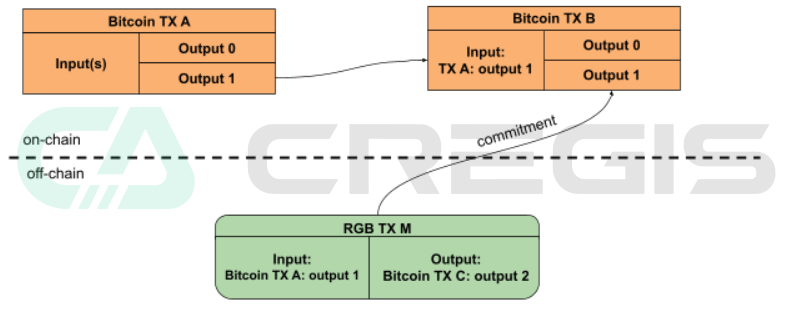
(Image source: https://medium.com/@FedericoTenga/understanding-rgb-protocol-7dc7819d305)
The specific payment information for RGB tokens is transmitted off-chain through dedicated communication channels from the payer's client to the receiver's client, which verifies that it does not violate the rules of the RGB protocol. In this way, blockchain observers cannot obtain any information about RGB user activities.
However, verifying the received payment information is not enough to ensure that the sender truly owns the assets they are sending to you. Therefore, to ensure the finality of the transaction, you must also receive the entire transaction history regarding these tokens from the payer, tracing back from the current transaction to the original issuance. Once all transaction histories are verified, you can ensure that these assets have not been inflated and that all spending conditions attached to the assets have been met.
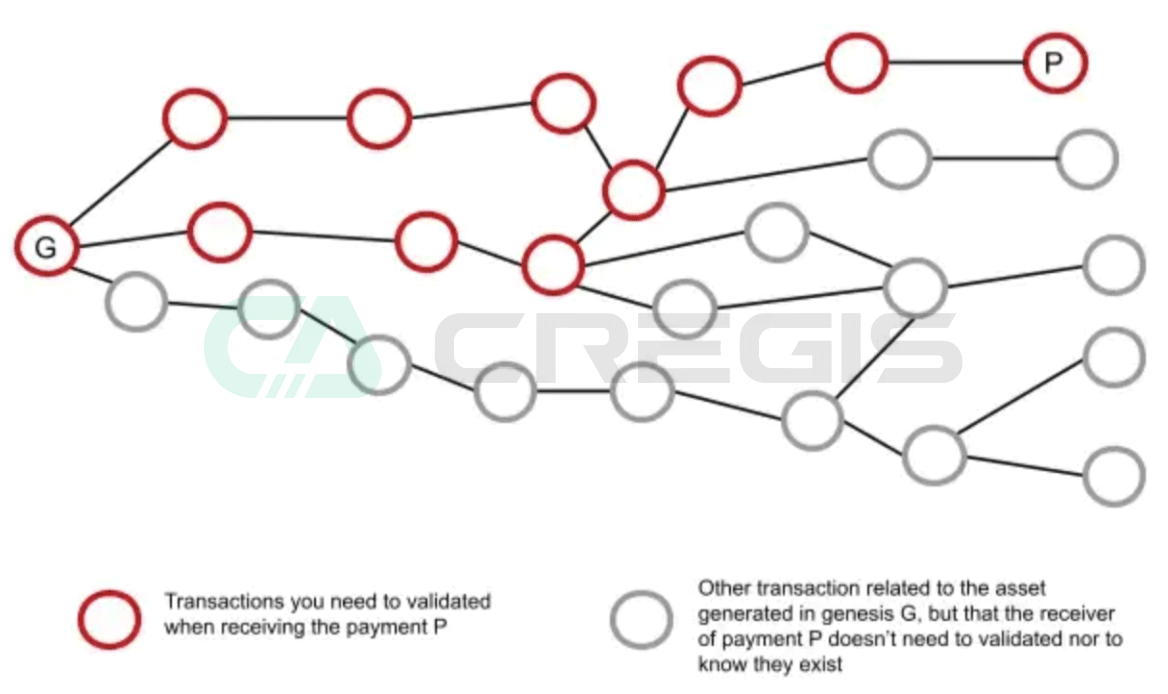
V. Conclusion
For Bitcoin, 2023 has been a milestone year. Compared to first-layer blockchains focused on smart contracts (such as Ethereum), Bitcoin has faced certain technical limitations in functionality and application use cases. However, this year, the Bitcoin ecosystem has gained new directions and vitality through technological innovations, bringing more application scenarios and possibilities to Bitcoin.
References
https://docs.atomicals.xyz/faq
https://rodarmor.com/blog/runes/
https://github.com/BennyTheDev/pipe-specs
https://docs.lightning.engineering/the-lightning-network/taproot-assets
https://lightning.network/how-it-works/
https://docs.stacks.co/docs/intro
https://dev.rootstock.io/kb/faqs/
https://docs.liquid.net/docs/technical-overview
https://elastos.info/blog/elastos-bel2-bitcoin-layer-2-solution/
https://www.theblock.co/post/255683/bitvm-bitcoin-smart-contracts
https://www.rgbfaq.com/faq/what-is-rgb
https://medium.com/@FedericoTenga/understanding-rgb-protocol-7dc7819d3059
https://www.btcstudy.org/2022/04/24/understanding-rgb-protocol/
https://petertodd.org/2017/scalable-single-use-seal-asset-transfer
https://github.com/bitcoin/bips/blob/master/bip-0341.mediawiki
https://github.com/bitcoin/bips/blob/master/bip-0342.mediawiki
https://github.com/bitcoin/bips/blob/master/bip-0141.mediawiki










